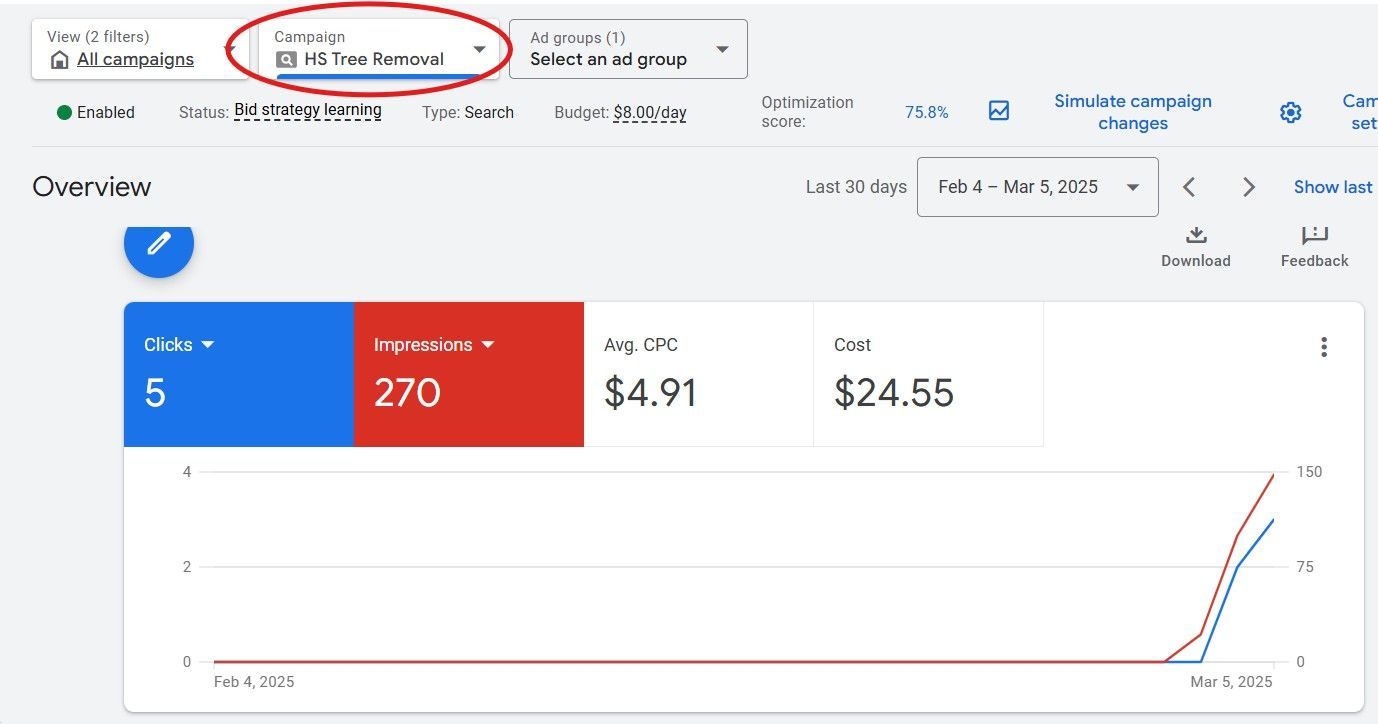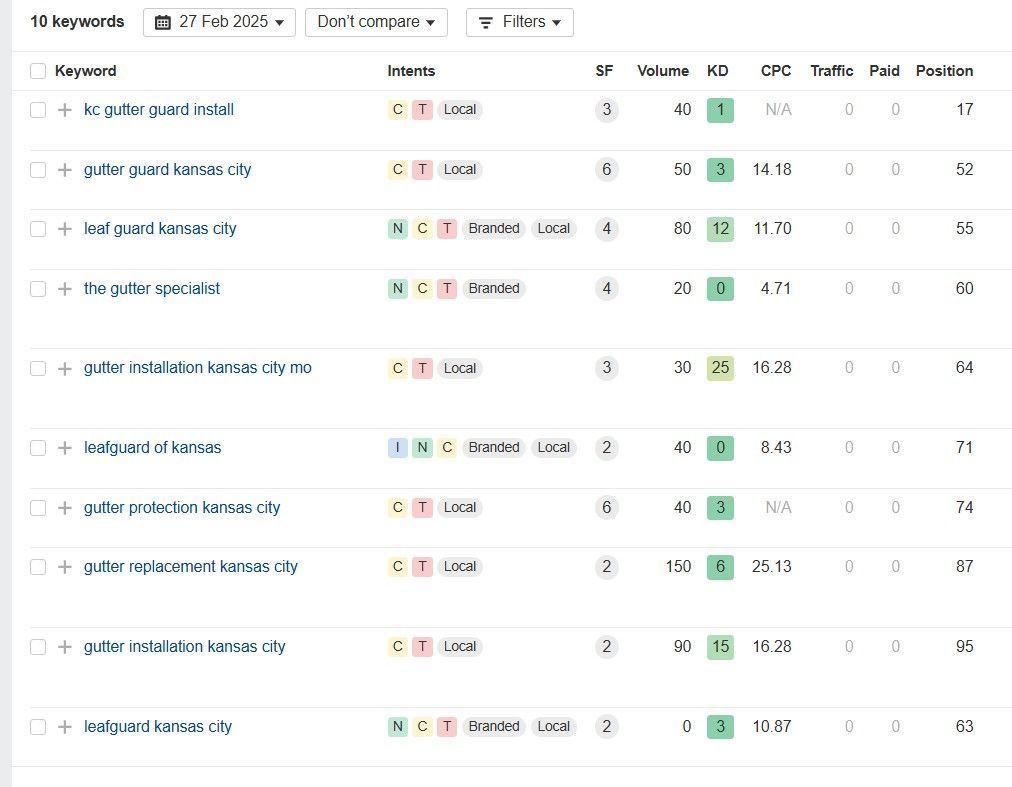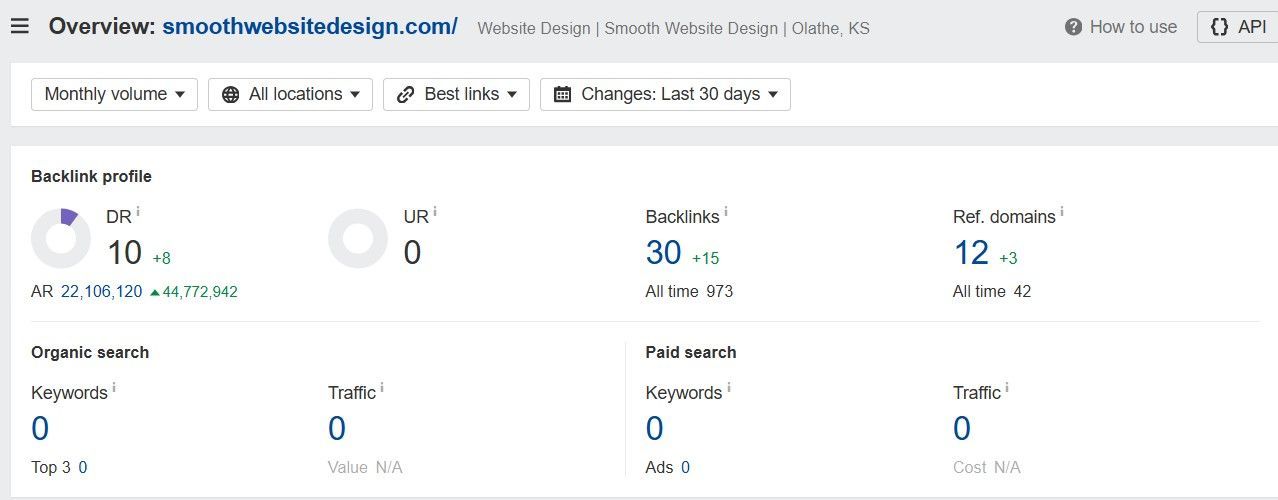BLOG
Blog
Latest Posts
We have people of multiple kind in the house. Together we can provide high quality work to satisfy you.

By Smooth Marketing Media
•
March 7, 2025
Google Ads Campaign Case Study for the Tree Services Industry Thank you for taking the time to read my blog! We are a full service digital marketing agency based in eastern Kansas established in 2023. Since our beginning, we have helped several companies maintain strong standing online with optimized websites, SEO strategies, and lead generation. Our goals for 2025 include expanding the business into offering a higher-level solution for dominant lead generation strategies for small, local businesses in the Kansas City market. Google Ads, Swinging the Bat: Step 1 The framework we are following for this campaign is based on the step-by-step guide by Aaron Young, an expert digital marketing agency in Australia. His Youtube video titled, Google Ads Tutorial for Beginners [Updated for 2025] , covers the start to finish process for getting a Google Ads campaign launched for a beginner. We set up a Search campaign so our ads showed up in the Google search results and our desired outcome was leads for our tree services client in KC. Because our client is only working from 8am-5pm, we set the ads to only show between those hours. We chose to do this to avoid internet users from "shopping around" different tree services at night when they never had any intention to call us because every click cost a lot of money at the end of the month!

By Smooth Marketing Media
•
March 6, 2025
Keyword research remains a crucial foundation for successful SEO strategies, even in today's AI-driven landscape. Effective keyword research combines understanding user intent with strategic content planning to drive targeted traffic and boost rankings. Modern SEO demands a sophisticated approach that goes beyond simple keyword matching. AI-powered content creation has transformed how we research and implement keywords, making it essential to focus on natural language patterns and semantic relationships between terms. Strategic keyword placement remains fundamental to optimization, but the key lies in creating value-driven content that serves both search engines and human readers. This balance ensures sustainable ranking improvements while maintaining engagement with your target audience. Key Takeaways Strategic keyword research combines user intent analysis with content planning Natural language optimization drives better search visibility Balanced keyword implementation improves rankings while maintaining readability Unveiling the Importance of SEO Keyword Research Keyword research for SEO forms the foundation of effective digital marketing by revealing valuable insights into user behavior and search patterns. Strategic keyword selection directly impacts visibility and drives qualified traffic to websites. Decoding Search Intent for User-Centric Content Understanding search intent enables content creators to align their material with what users actually seek. This precise targeting increases engagement and conversions. Search queries typically fall into three categories: informational, navigational, and transactional. Each type requires a distinct content approach. The most successful content addresses specific pain points and questions that emerge from keyword analysis. For example, a bakery might discover users searching "gluten-free birthday cakes near me" rather than just "bakery." The Evolution of AI in SEO Practices AI tools now analyze search patterns and predict trending topics with remarkable accuracy. These sophisticated algorithms help identify keyword opportunities human researchers might miss. Natural Language Processing has transformed how search engines interpret user queries. This advancement means keywords must now account for conversational phrases and voice search patterns. Modern AI-powered keyword tools provide deeper insights into competitive gaps and content optimization opportunities. They analyze thousands of data points to suggest the most valuable keyword targets. Securing Organic Traffic with Strategic Keyword Selection Targeted keyword selection drives qualified traffic by attracting users with specific needs or interests. This precision targeting leads to higher conversion rates. Long-tail keywords often present the best opportunities for new websites. They typically have lower competition while attracting highly motivated visitors. Monitoring keyword performance helps refine content strategy over time. Regular analysis reveals which terms drive the most valuable traffic and deserve additional focus. Competitive keyword difficulty scores guide resource allocation. This data helps prioritize content creation efforts for maximum impact. Crafting SEO-Optimized Content that Resonates Creating content that ranks well requires a deep understanding of search intent, strategic keyword usage, and content optimization best practices. The key is producing valuable content that satisfies both search algorithms and human readers. Understanding Google's Search Algorithms Google evaluates content quality through multiple ranking factors including relevance, authority, and user experience signals. The algorithm analyzes how users interact with search results through metrics like click-through rates and time on page. Technical optimization remains crucial - proper heading structure, meta descriptions, and image alt text help search engines understand your content. Pay attention to page load speed and mobile responsiveness. Use Google Search Console to monitor performance metrics and identify opportunities for improvement. Track which queries bring visitors to your pages and optimize accordingly. Creating Content that Ranks: The Role of Related Keywords Strategic keyword placement strengthens topical relevance. Include semantically related terms and natural language variations that users search for. Target long-tail keywords with specific search intent. These often convert better than broad terms. Key placement areas for keywords: Title tags and meta descriptions Headers and subheaders First 100 words of content Image alt text URL structure The Art of Content Optimization for Search Engines Content optimization requires balance between readability and search-friendliness. Break up text with bullet points, short paragraphs, and relevant images. Structure content logically with clear headings that follow keyword hierarchy. The most important topics should appear near the top of the page. Keep content fresh and updated. Google favors recently modified pages that contain current information. Internal linking connects related content and helps distribute ranking power across your site. Link to relevant pages using descriptive anchor text.

March 6, 2025
Technical SEO might seem overwhelming, but it's the backbone of any successful website's search engine performance. As a digital marketer who has optimized hundreds of websites, I've seen firsthand how proper technical optimization can transform a site's visibility and user experience. A comprehensive technical SEO audit addresses three critical areas: site crawlability, page speed optimization, and mobile responsiveness - these elements form the foundation of your website's search engine success. The technical SEO checklist has evolved significantly in 2025, with search engines placing greater emphasis on user experience signals and Core Web Vitals. Getting technical SEO right means more than just checking boxes - it's about creating a seamless experience for both search engines and users. When implemented correctly, technical optimization can dramatically improve your site's ranking potential and conversion rates. Key Takeaways Technical optimization directly impacts search visibility and user satisfaction Regular site audits help identify and fix performance bottlenecks before they affect rankings Implementation of Core Web Vitals and security protocols creates a competitive advantage Establishing a Robust Technical SEO Foundation Building a strong technical foundation for your website ensures search engines can effectively crawl, index, and rank your content while providing users with an optimal experience. The Significance of Technical SEO Technical SEO analysis forms the backbone of your website's search performance. Without proper technical optimization, even the best content can remain hidden from search engines. A comprehensive technical SEO audit examines crucial elements like HTTP status codes, SSL certificates, and mobile responsiveness. Search engines prioritize websites that meet their technical requirements. Clean code, proper URL structure, and efficient internal linking help establish authority and trust. Understanding Crawl Budget and Site Speed Search engines allocate specific resources to crawl your website. Managing crawl budget efficiently ensures important pages get indexed quickly. Page speed directly impacts user experience and search rankings. Key speed factors include : Image optimization Browser caching Code minification Server response time Regular monitoring of Core Web Vitals helps identify performance bottlenecks and areas for improvement. The Role of XML Sitemaps and Robots.txt Files XML sitemaps act as roadmaps for search engines, highlighting important pages and their relationships. Dynamic sitemaps automatically update as content changes. The robots.txt file provides clear directives to search engine crawlers: Which pages to crawl Which sections to ignore Crawl rate specifications Strategic implementation of both files ensures efficient crawling and proper resource allocation. Advancing User Experience and Site Structure A well-structured website with smooth navigation and fast loading speeds directly impacts rankings and keeps visitors engaged. Technical excellence in these areas creates a foundation for SEO success. Optimizing for Mobile-Friendliness and Core Web Vitals Mobile optimization starts with responsive design principles that adapt seamlessly across devices. Test your site using Google's Mobile-Friendly Test tool to identify potential issues. Core Web Vitals require careful attention to three key metrics: Largest Contentful Paint (LCP): Keep under 2.5 seconds First Input Delay (FID): Maintain below 100ms Cumulative Layout Shift (CLS): Target less than 0.1 Optimize images, leverage browser caching, and minimize JavaScript execution to improve these scores. Crafting a User-Centric Site Architecture Create a flat site structure where important pages are no more than 3 clicks from the homepage. This helps both users and search engines find content efficiently. Use clear URL structures that reflect your site hierarchy: example.com/category/subcategory/product Place high-value content prominently in the navigation menu. Remove or redirect dead ends and orphaned pages that can trap users. Internal Links and Breadcrumbs for Navigation Strategic internal linking distributes page authority and guides users through related content. Place contextual links within body content rather than relying solely on navigational menus. Implement breadcrumbs to show users their exact location: Home > Services > SEO > Technical Audits Use descriptive anchor text for internal links that clearly indicates the destination page's content. This helps search engines understand topic relationships between pages. Review your internal link structure quarterly to identify and fix broken links or redirect chains that can harm user experience.
Contact Us
Olathe, KS 66061, United States of America
Our Newsletter
Thank you for contacting us.
We will get back to you as soon as possible.
We will get back to you as soon as possible.
Oops, there was an error sending your message.
Please try again later.
Please try again later.
Subscribe For Newsletter
© 2025
All Rights Reserved | Powered By Smooth Marketing Media

